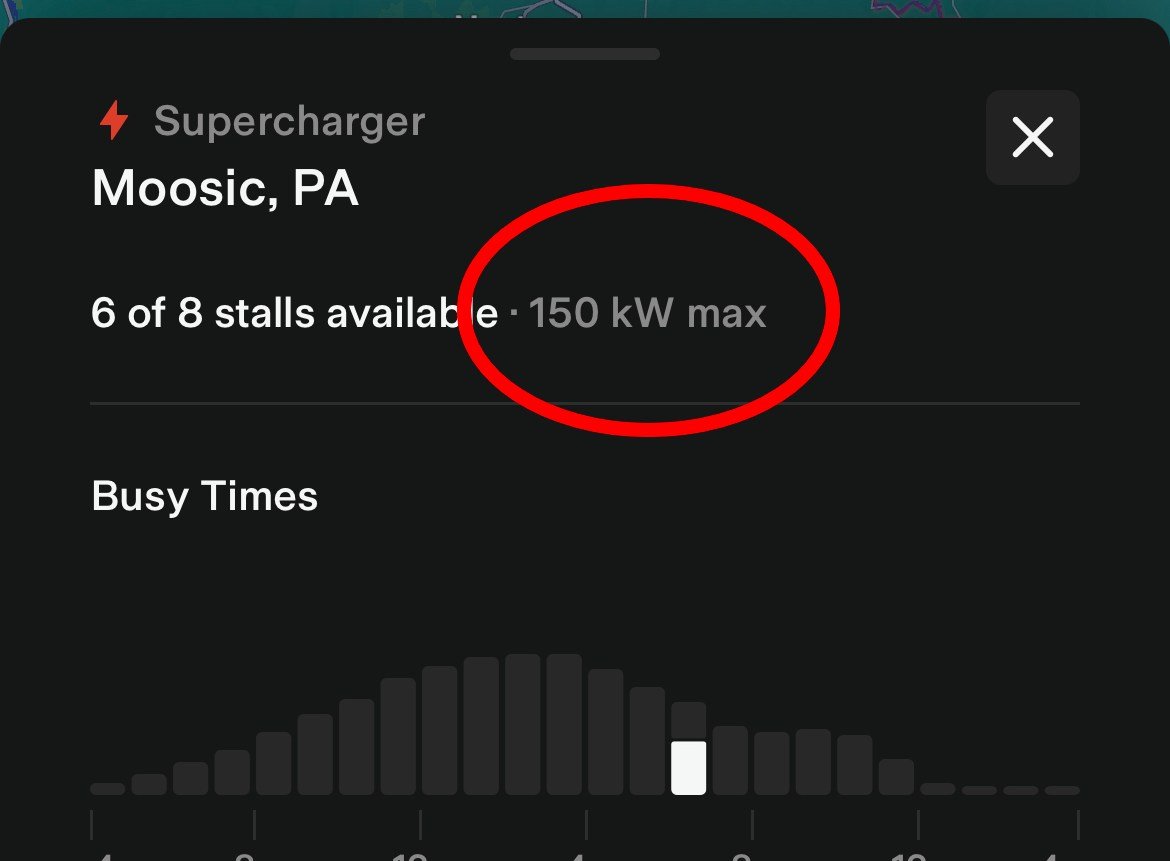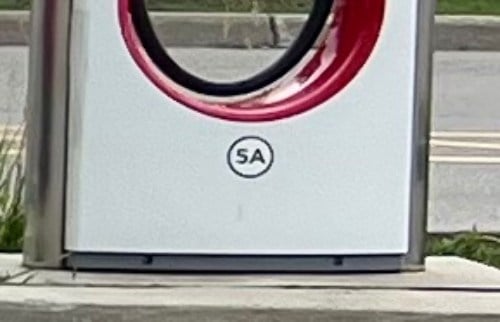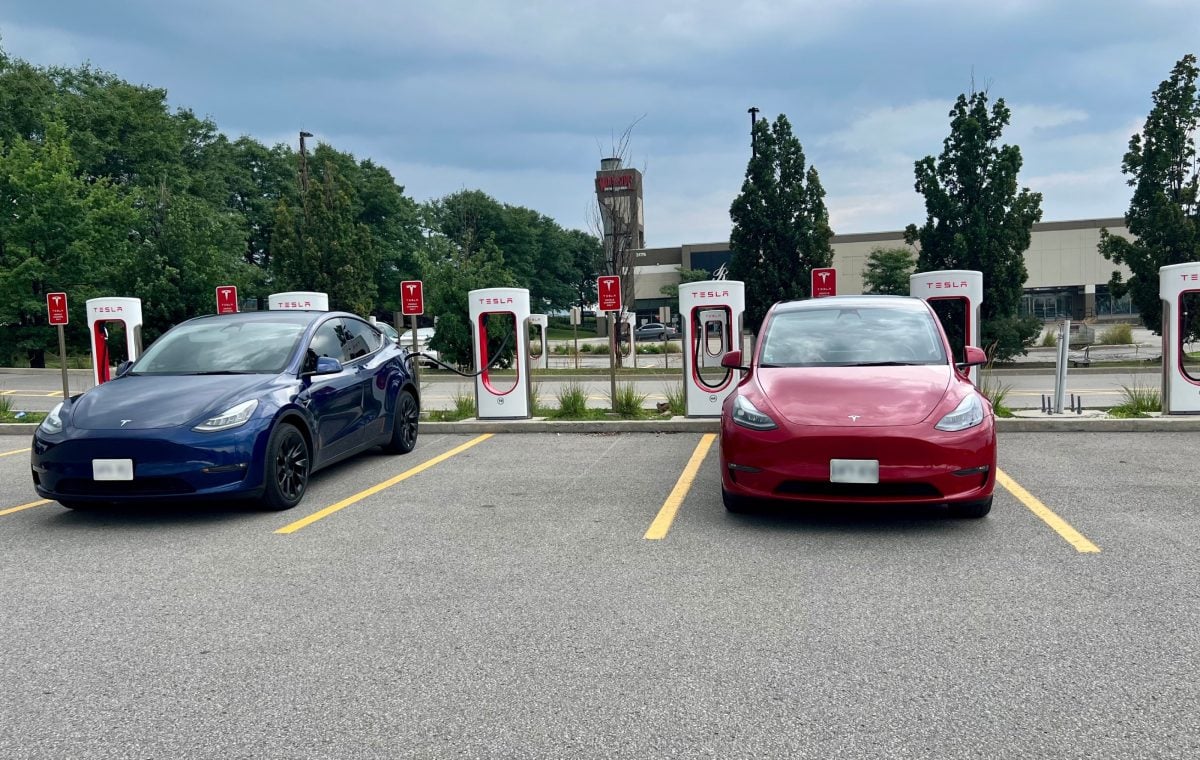Have you ever noticed that drivers at Tesla Supercharger locations tend to arrange their cars in alternating spots? One reason is of course to make it easy to get in and out of their vehicles without getting door dings. But the main reason has to do with the historical electrical architecture of Supercharger stations.
The original V1 Superchargers maxed out at 100 kW, and V2s improved the output to 150 kW. But what both versions had in common is that power was shared between two adjacent stalls. Meaning that if you were charging your EV at 150 kW at a V2 Supercharger on stall 1A, and someone shows up to occupy stall 1B, your speed would suddenly be cut in half to approximately 75 kW. With the introduction of V3 Superchargers (and V4), power sharing is no longer an issue at the newest locations. Each stall has dedicated power and is able to deliver as much power as the car will request. Which is up to 250 kW, for the newest Teslas.
How to tell if a location has power sharing? (V2)
By now, V1 locations have been upgraded. However, there are many V2 locations in North America to this day. The easiest way to tell if a location is V2 or V3 is by looking for the maximum power indicated for that location on the map. V2 locations have a maximum power of 150 kW, while newer V3 locations will be marked as 250 kW.
So when you arrive at a V2 Supercharger location, the courteous thing to do upon arrival is to look for a space with no adjacent car, if available. That way everyone can finish their session faster and leave. Modern Teslas can charge faster than 75 kW up to about 70% SoC or higher, so having the speed cut early during a charging session means both drivers are going to face a longer wait to finish charging. Knowing how to choose the right spot can save you several minutes of charging time during a charging stop for you and a fellow driver.


Related
- Can You Charge Teslas On The Ivy Charging Network?
- Do New Tesla Cars Come With Free Supercharging?
- How To Get The Most Value From DCFC/ Supercharging

